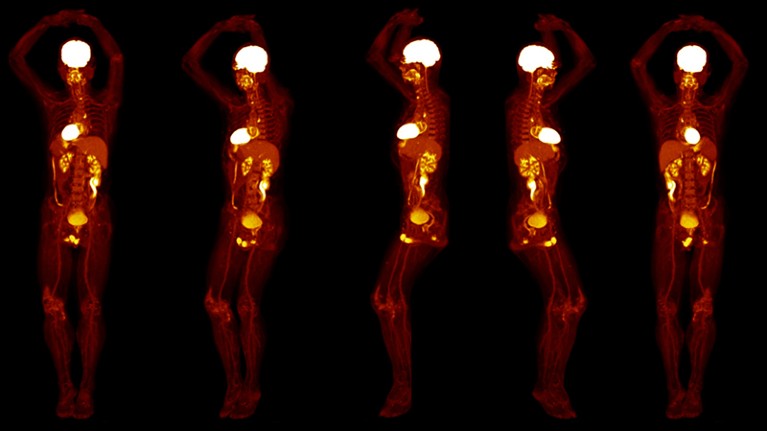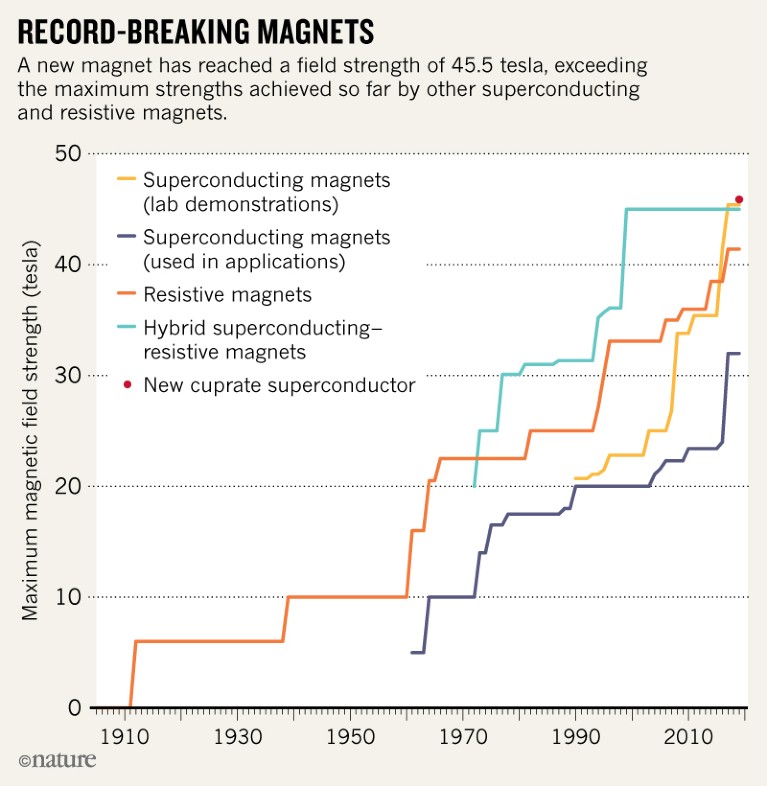Hello Nature readers, would you like to get this Briefing in your inbox free every day? Sign up here.

Images created using a modified medical device that can scan the entire body in seconds.Credit: UC Davis; Zhongshan Hospital; United Imaging Healthcare
PET scanner can image entire body in seconds
A modified positron emission tomography (PET) scanner can create 3D renderings of the entire human body in as little as 20 seconds. Biomedical engineers connected eight PET scanner detectors into a 2-metre-long tube so that it could image a whole person, cutting down the time and radiation exposure required. The machine could be especially helpful for imaging children, who tend to wiggle around inside a scanner and ruin the measurements, as well as for studies of how drugs move through the body.
Nature | 3 min read (with videos of the scans in action)
Harassment reports “shockingly low” at US agencies
Several major US government science agencies have received only a handful of reports of sexual harassment by grant recipients in recent years — rates that are “shockingly low”, a congressional hearing on harassment in research was told yesterday. The National Science Foundation — which requires institutions that it funds to notify it of any finding related to sexual harassment by a grant recipient — received 14 complaints. Other major agencies, including NASA and the National Institutes of Health, reported three or fewer. In contrast, a recent landmark report that found sexual harassment is rife in the sciences in US academia.
Superconducting magnet breaks strength record
The world’s most powerful superconducting magnet can generate a magnetic field intensity of 45.5 tesla. Only pulsed magnets, which sustain fields for a fraction of a second at a time, have achieved higher intensities. The record-breaking magnet is made of coils of a cuprate superconductor.

Source: Mark Bird, National High Magnetic Field Laboratory
FEATURES & OPINION
Artificial intelligence tackles art history
Machine learning is helping experts to attribute paintings, understand how artists collaborated and map the development of artistic styles over time. “We had theories but they’re not provable,” says art historian Marian Mazzone. “Computer science may be a tool that can help me empirically answer some of these questions.”
Climate lessons from past disasters
Palaeoscientists and archaeologists are scouring history for ways to survive the climate crisis. They hope their findings will spur evidence-based plans to adapt, instead of giving up hope. “We have an incredible treasure trove archive of human experience dealing with sea level change. We ought to be tapping into that,” says archaeologist Ken Sassaman.
Family tree forensics goes to trial
A 32-year-old murder that goes to trial this week in the United States is the first time a cold case cracked with genetic genealogy will reach the courtroom. The man accused of killing two Canadian tourists was tracked down using family connections who had shared their DNA on GEDmatch. Also on trial will be genetic genealogy itself, and whether it is admissible as legal evidence.
